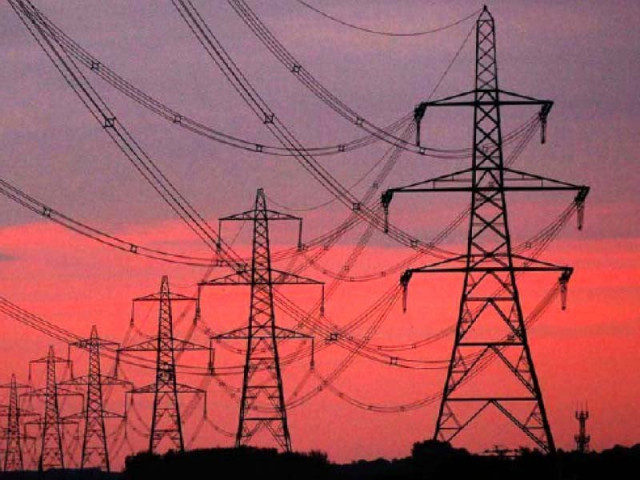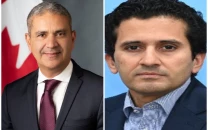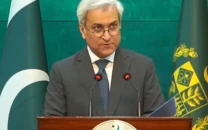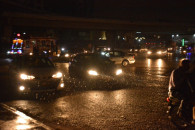K-E seeks policy for high loss areas
Wants to push up electricity tariff for areas having high line losses and theft

K-Electric (K-E) has sought a national policy from the regulator to sell power at a comparatively higher price to the people residing in areas where line losses and theft through illegal connections (Kundas) are high and recoveries through monthly billing stand low.
The company demanded the policy from the National Electric Power Regulatory Authority (Nepra) ahead of the scheduled end to the exclusive rights of K-Electric for power supply to end-consumers in the city of ports - Karachi - and potential entry of other companies for the provision of electricity at competitive prices in 2023.
“None of them (power transmission and distribution companies) would have the capacity to take the cost on their own pockets of power supply in high loss-carrying areas,” K-Electric CEO Moonis Alvi said at an online press conference held on Wednesday to share the company’s additional investment plans worth Rs140 billion till 2023.
There is an additional cost of supplying power to such high loss-carrying areas and “all the companies (including newcomers) should be allowed to recover losses through tariff … K-E has the right to demand a level playing field,” he said.
Read: NEPRA reserves decision on K-Electric petition
K-E will not be alone in facing competition, but all the other power transmission and distribution companies currently enjoying a monopoly in their respective cities and towns nationwide will have to operate in a competitive environment from 2023 onwards.
At present, the households in areas carrying higher line losses and paying less in monthly bills face planned load-shedding of up to seven to eight hours a day throughout the country.
Responding to a question, the CEO said that his company was all set to ink an agreement to obtain additional gas in a few days for its forthcoming new dual-fuel (gas and diesel) power plant of 900 megawatts.
“The start of commercial production by the plant (with imported gas as its primary fuel) has delayed due to Covid-19 challenges,” Alvi pointed out.
“The plant is on a test run these days. K-E now aims to start commercial production by the end of September. Earlier, the company had planned to begin production by the end of July,” he said.
Speaking on the occasion, K-E Chief Marketing Officer Sadia Dada stated that electricity demand was on the rise in the city, which was expanding. “Power demand will go up with the setting up of an industrial zone in Gharo,” she added.
She was of the view that Karachi was the engine of economic growth and had employed 40% of the total workforce in the country. It needs enhanced investments to improve infrastructure for power production, transmission and distribution.
K-Electric has submitted a revised investment plan of around Rs440 billion for the tariff control period of 2017-2023.
According to the Multi-Year Tariff 2017-2023 (notified in May 2019), determined by Nepra for K-E, the private power utility was allowed an investment of Rs299 billion.
Subject to regulatory approvals, K-E has submitted plans to make additional investments (other than Rs299 billion) of around Rs140 billion.
Out of the planned investment of Rs299 billion over five years, “K-E has already invested over Rs255 billion as of 2021 since the start of the tariff control period,” the company said in a press statement.
“Since privatisation, K-E has … doubled its transmission and distribution capacity and achieved a significant reduction in T&D (transmission and distribution) losses through effective loss reduction strategies.”
Read more: NEPRA revises tariff for K-Electric during Jul-Dec 2020
The company is working with the federal government to build infrastructure to increase supplies up to 2,050MW from the national grid to Karachi.
Furthermore, with the rapid installation of aerial bundled cables (ABCs) that have yielded good results in curtailing theft, K-E also plans to expand the deployment of automated meter readers (AMRs) on its network, which improves visibility of the network and provides greater transparency.
“The combined impact of these potential investments in generation, transmission and distribution is expected to enable exemption from load-shedding from around 78% of the city today to more than 90% by 2023,” the statement added.
“Allowance of these plans has no direct impact on the customer end-tariff,” it said. “However, declining to approve the additional proposed investment could impact K-E’s ability to seek funding for these projects, thereby adversely affecting the customers, particularly new connections, as well as affecting the safety and reliability of up-gradation projects.”
Published in The Express Tribune, August 5th, 2021.
Like Business on Facebook, follow @TribuneBiz on Twitter to stay informed and join in the conversation.



















COMMENTS
Comments are moderated and generally will be posted if they are on-topic and not abusive.
For more information, please see our Comments FAQ